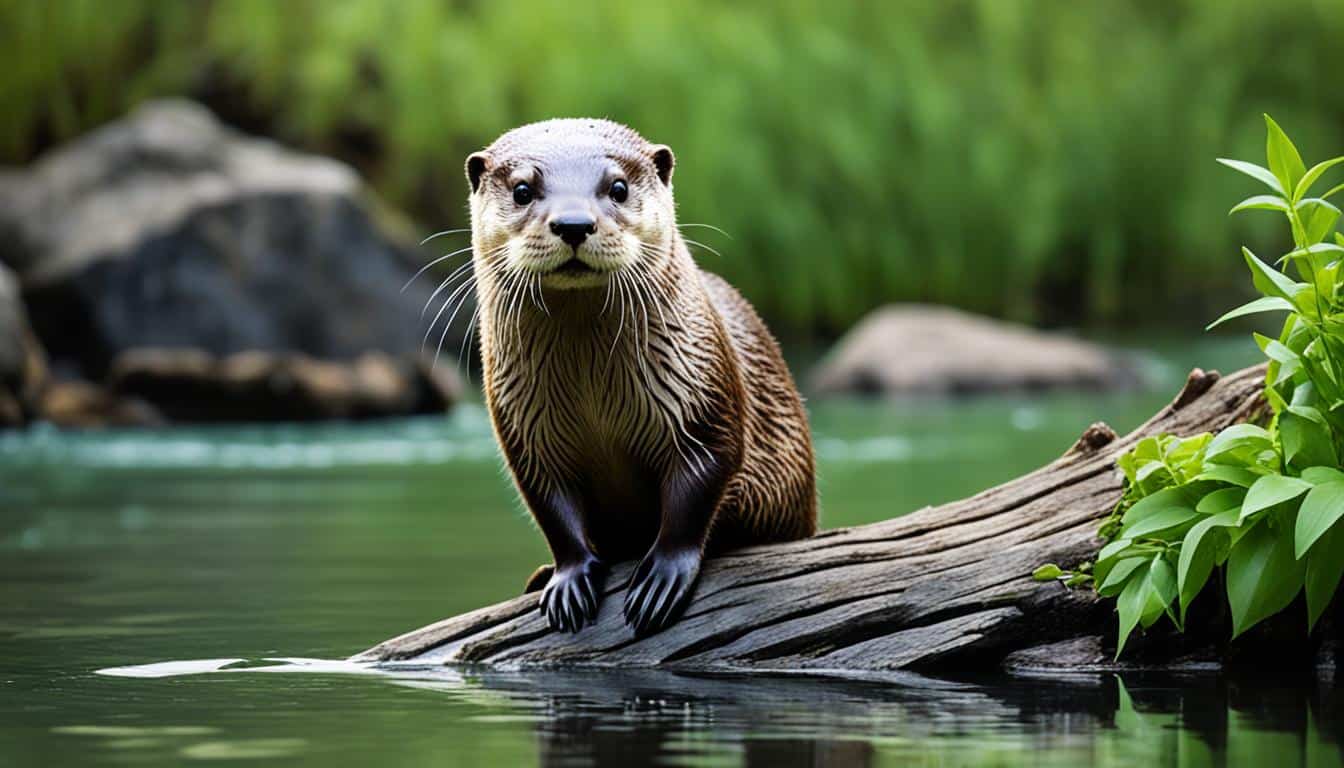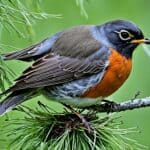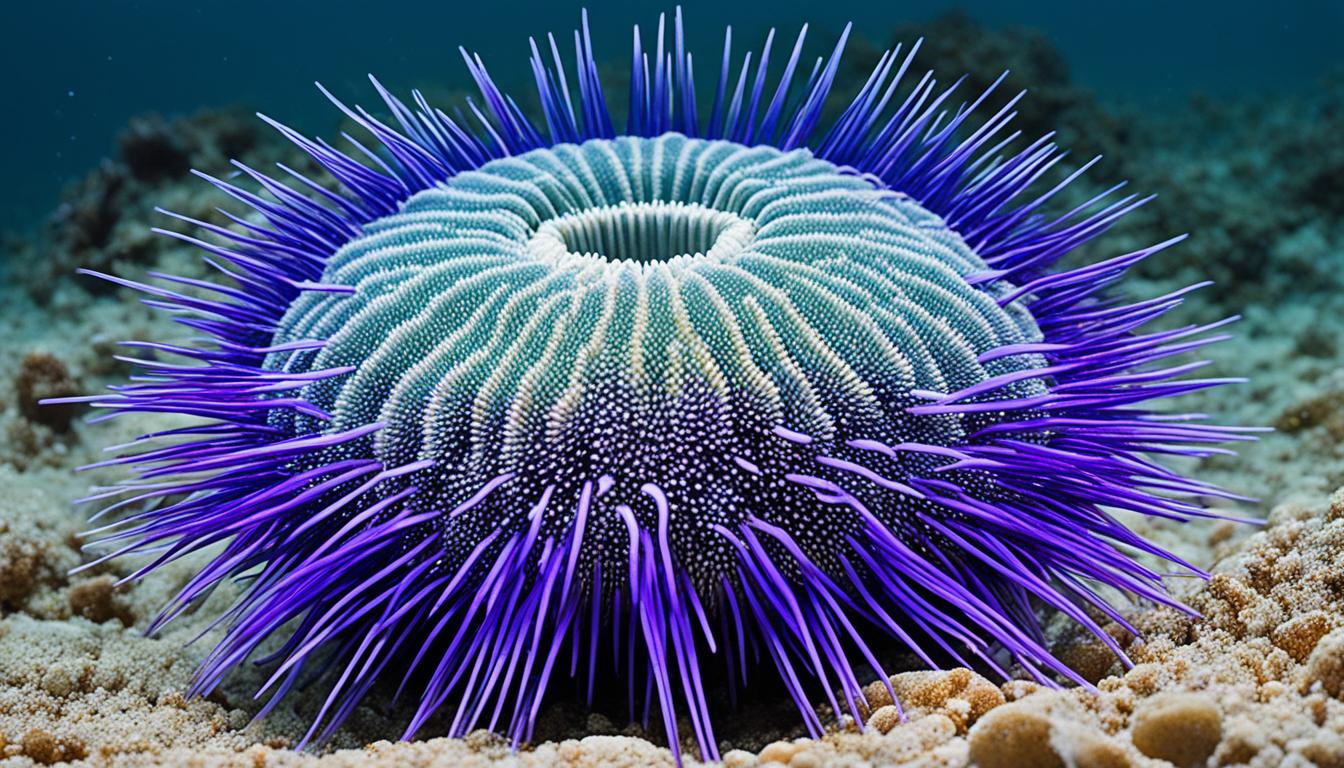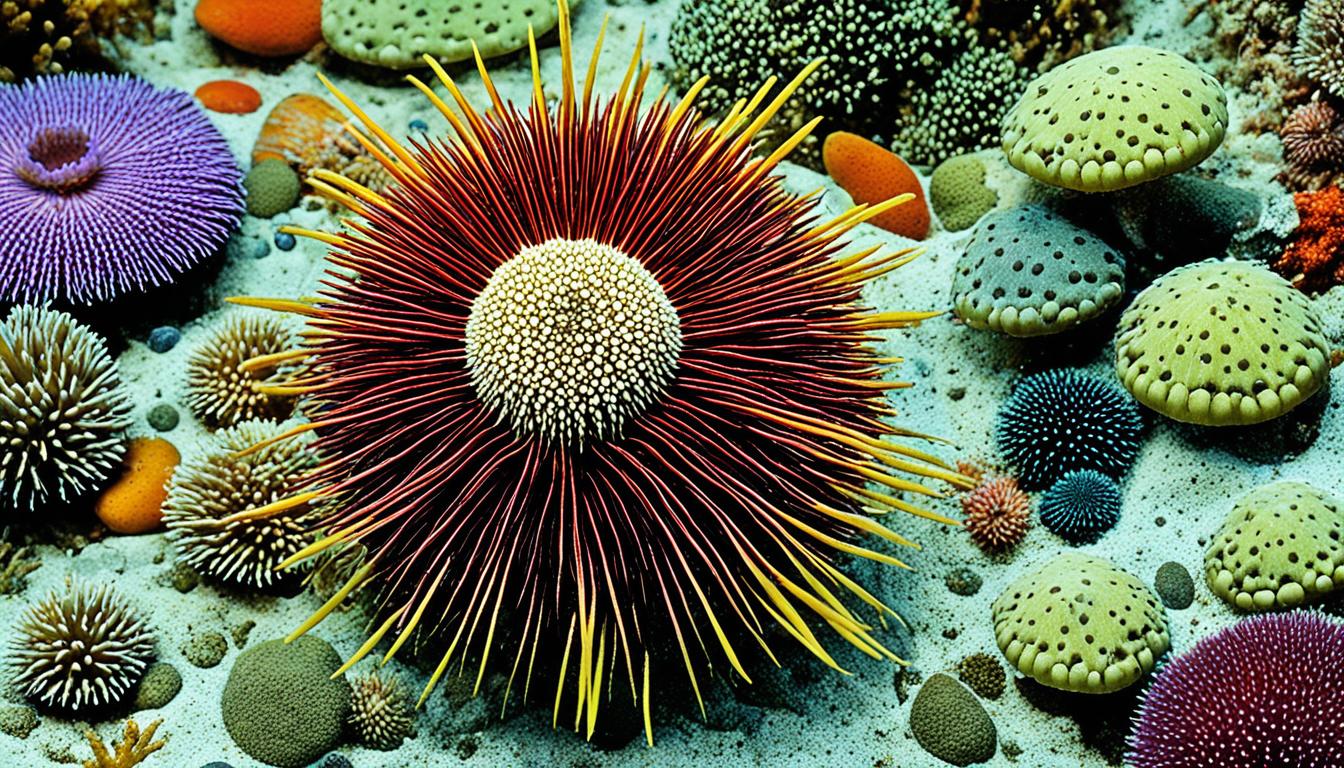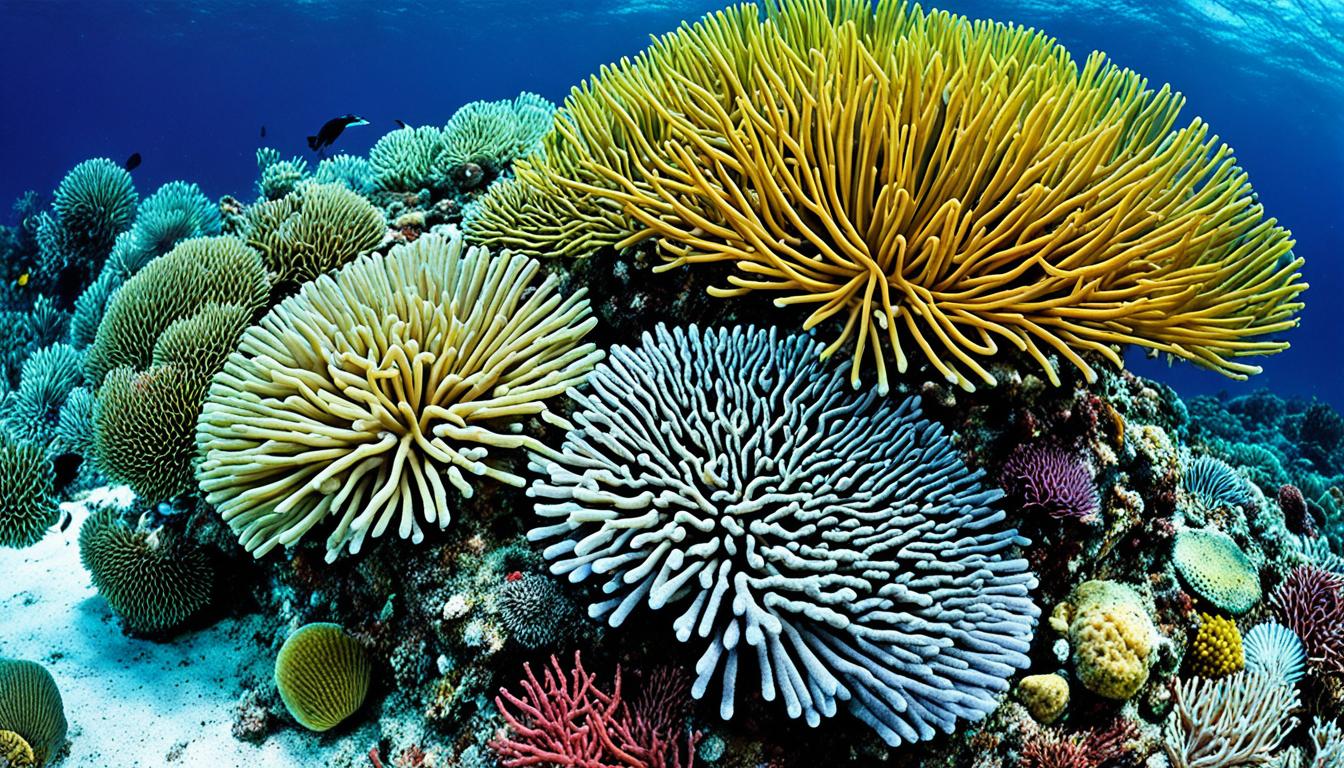Have you thought about how far the American otter travels in North America? The North American river otter is known for being able to adapt. This otter’s thick, water-repellent fur lets it live in many places. It can be seen both in the sea and on rivers and lakes inland.
They live in many types of areas. You can find their homes near swamps, estuaries, and freshwater lakes. Studying where American otters live helps us understand the health of water systems. They are an important part of keeping an eye on the environment.
Introduction to the North American River Otter
The North American river otter is a special animal found only in North America. It is known for its ability to live in different places, such as rivers and coasts. This ability shows us how important they are for the environment.
Male and female otters differ in size, known as sexual dimorphism. Males are typically larger, weighing up to 14 kg. The localities of American otter populations stretch over various places in North America.
Otters prefer living in clean rivers, lakes, and near the coast. They adapt well to different areas, which helps them survive in many parts of North America. Their strength and adaptability are key to their wide distribution.
| Characteristic | Description |
|---|---|
| Weight | Up to 14 kg (30.9 lb) |
| Habitat | Rivers, lakes, coastal shorelines |
| Distribution | Throughout North America |
Naming and Classification of the American Otter
The North American river otter, or Lontra canadensis, is vital in the kingdom Animalia. Its unique traits and role in nature make it special. To understand the naming and classification of the American otter, we look at its scientific names and different names people call it.
Scientific Classification
The scientific classification of Lontra canadensis is very specific. It fits into these groups:
| Taxonomic Rank | Classification |
|---|---|
| Kingdom | Animalia |
| Phylum | Chordata |
| Class | Mammalia |
| Order | Carnivora |
| Family | Mustelidae |
| Genus | Lontra |
| Species | Lontra canadensis |
This table about scientific classification of Lontra canadensis shows how detailed scientists are. They use this to organize all kinds of life forms.
Common Names Used
There are various common names for river otters you might know. The North American river otter has many names based on where it’s found. Some popular names are:
- Northern River Otter
- Common Otter
- American Otter
- Canada Otter
Knowing these common names for river otters shows the rich variety and cultural importance of these animals.
Subspecies of the American Otter
The American otter, known as Lontra canadensis, comes in different types. These are called Lontra canadensis subspecies. They live in many places across North America, adapting to their own unique surroundings.
Identified Subspecies
There are interesting subspecies of the American otter:
- Lontra canadensis canadensis: Found in eastern Canada and the US.
- Lontra canadensis kodiacensis: It lives on Kodiak Island in Alaska.
- Lontra canadensis vaga: It’s found along the coasts of the southwest US and Mexico.
- Lontra canadensis sonora: It lives in the Sonoran Desert.
Regional Variations
Each Lontra canadensis subspecies lives in a different area. They adapt to their environment. For example, the Lontra canadensis canadensis loves lakes and rivers in its region. But the Lontra canadensis kodiacensis thrives in Kodiak Island’s special marine setting.
| Subspecies | Region | Habitat |
|---|---|---|
| Lontra canadensis canadensis | Eastern Canada, United States | Freshwater Lakes, Rivers |
| Lontra canadensis kodiacensis | Kodiak Island, Alaska | Coastal Marine |
| Lontra canadensis vaga | Southwestern United States, Mexico | Coastal Areas |
| Lontra canadensis sonora | Sonoran Desert | Freshwater Bodies within Desert Regions |
The regional variations of the subspecies of the American otter show their flexibility. All these Lontra canadensis subspecies remind us. We need to protect their different habitats to keep this species alive.
Natural Habitat of American Otters
The American otter, known as the North American river otter, lives in various water places. These include several water bodies and lands with clean water, plenty of food, and safe places to live.
Preferred Water Bodies
American otters like areas with lots of water. They live in rivers, lakes, and the coast. These places provide everything they need, like food and a home.
They choose areas full of fish and other food. A rich environment helps them survive. This ensures they can eat enough to stay healthy.
Environmental Conditions Required
American otters need clean water to live. The quality of water affects the amount of food they can find. It also affects their health and the ability to have babies.
They also need plants or rocks for shelter. Finding safe places to stay is very important for their young. So, protecting these features helps otters to thrive.
Geographical Distribution Across North America
The North American otter distribution used to stretch from Alaska to Mexico. It showed how otters could live in many places. But, people have caused them to disappear from some areas, risking their home range.
Yet, thanks to conservation efforts, otters are making a comeback. Efforts to restore and protect habitats have let them return to some places. This shows otters’ impressive ability to recover their lost lands.
Now, the North American river otter is doing well in many places. Below is a summary of where they thrive today:
| Region | Historical Presence | Current Distribution |
|---|---|---|
| Alaska | Widespread | Increasing |
| Canada | Extensive | Stable |
| United States | Variable | Rebounding |
| Mexico | Limited | Expanding |
Conserving habitats and water is very important for otters. This work gives hope for their future in North America. The efforts to protect rivers and their homes are crucial for otters to keep thriving.
Historical Range and Reintroduction Efforts
American otters, also called North American river otters, once lived across a large area. But, their numbers fell a lot after Europeans came. This was because of heavy trapping and the loss of their homes. This loss hurt their population and the places they used to live.
Historical Decline
Back then, many otters were caught for their fur, leading to a big drop in their numbers. The places where they lived were also disappearing because of farming and cities. This twin threat nearly wiped them out in places all across North America.
Reintroduction Programs
Seeing the otter’s decline, many states started bringing them back to their old homes. They caught healthy otters from areas with plenty of them and moved them to places where they were almost gone.
These efforts are paying off, helping otters re-establish in places they disappeared from. It’s a good step in bringing back these special animals.
Factors Affecting the Range of American Otters
American otters’ lives are greatly affected by both nature and people. They love clean water and get upset by changes in where they live. Let’s check out what really makes a difference to these fun animals.
Environmental Pollution
Things like heavy metals, pesticides, and factory waste make water dirty. This hurts the otters because they can’t live in polluted places. It makes them move away to find cleaner spots.
Human Activities
People do things like destroy habitats, trap without rules, and change how lands are used. Ongoing building, cutting trees, and farming take away the otters’ home marshes. This, plus catching them without watching, really messes with where and how they live.
| Factor | Impact on Otter Range |
|---|---|
| Environmental Pollution | Degrades water quality, forcing otters to migrate from polluted areas. |
| Habitat Destruction | Eliminates wetland areas, reducing available habitats for otter dens. |
| Unregulated Trapping | Directly decreases otter populations, limiting their range. |
| Changes in Land Use | Disrupts the natural habitat and availability of food resources. |
What is the range of the American otter?
The American otter lives in many places across North America. You can find them in rivers, lakes, and even along coasts. This shows how well otters can adapt to different environments.
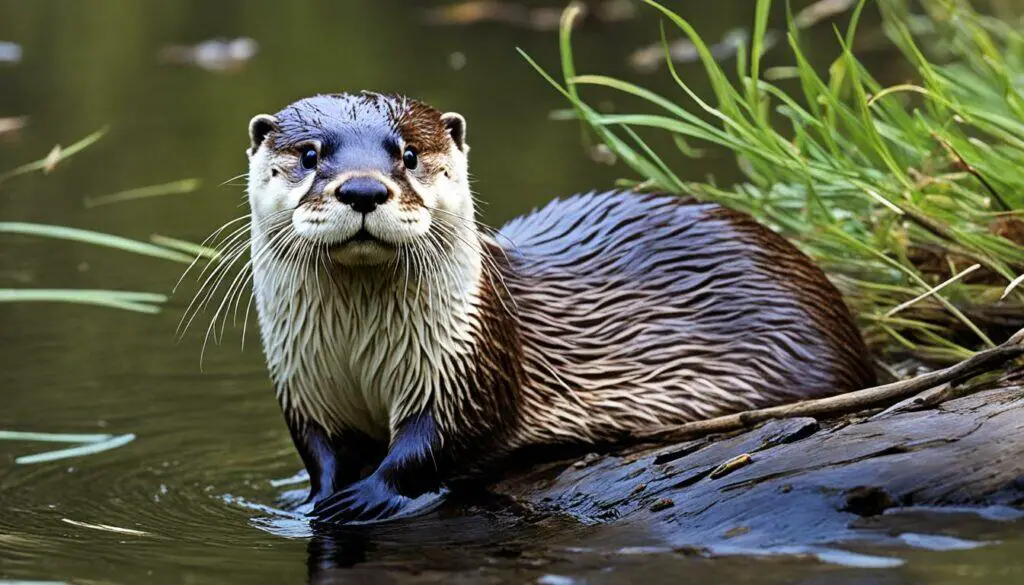
Knowing where otters live is important. It helps us understand their role in nature. Otters use different places like rivers and lakes based on what’s available, like food.
To provide a comprehensive view:
- Rivers and streams
- Lakes and ponds
- Coastal shorelines
- Estuaries and marshes
This variety shows their ability to live in various settings. They are key in keeping the natural balance as top predators in their habitat.
So, where do otters usually stay? They prefer clean areas with plenty of fish, amphibians, and more. This means their well-being depends on these waters staying healthy.
In conclusion, American otters inhabit a wide range of North America’s waterways. From Alaska’s cold waters to Florida’s lakes, they are a wonder. Their story continues to captivate both nature lovers and scientists.
Habitat Regions Where American Otters Thrive
American otters live in places with clean water and lots of food. They can live in rivers, marshes, and along the coast. Their ability to adapt helps them survive in different habitats.
Plenty of clean water is key for otters to do well. They use rivers, lakes, and estuaries to find food and have fun. This is why you often see otters where there’s lots of clean water full of fish and other water creatures.
Wetlands, like marshes, are also important for otters. They have lots of plants for hiding and making homes. And, they’re full of different animals to eat, helping otters thrive.
Coastal areas are great habitats for otters too. Here, otters find food from both the land and sea. They like calm, shallow waters – they can eat from sea and freshwaters here.
“The adaptability of American otters to various habitats, from riverine systems to coastal areas, is a testament to their survival prowess. These thriving habitats for river otters are integral for their continued proliferation.”
Knowing about otter habitats is crucial for saving them. By caring for these environments, we help otters have homes with plenty of food. This supports their numbers across North America.
Diet and Its Impact on Distribution
The diet of the American otter is key in deciding where they live. The food they find affects their living areas. This links their diet to the range they cover.
Primary Diet Components
American otters mainly eat various water organisms. They eat fish, amphibians, and crustaceans. But, crayfish and fish are their favorites. This mix of foods helps them live in different waters. It also meets their energy needs to stay alive and reproduce.
Dietary Variations by Region
Their diet changes based on what’s around for them to eat. In some places, they might eat more frogs and shellfish. In other areas, it’s mostly fish. This local food choice affects where otters decide to live. They go to places rich in their favorite foods.
| Region | Primary Diet Components |
|---|---|
| Eastern United States | Fish, Crayfish |
| Western United States | Fish, Amphibians |
| Northern Canada | Fish, Small Mammals |
| Southern Mexico | Crustaceans, Fish |
Studying the American otter’s diet helps keep them safe. It aids in their care and protection where they live.
Conservation Status and Efforts
The North American river otter is listed as “Least Concern” by the IUCN. Even so, it faces threats from pollution and loss of habitat.
Current Conservation Status
American otters have a stable population but are still at risk. Water pollution and habitat loss due to urban growth are big issues.
Ongoing Conservation Efforts
Many efforts are in place to help river otters. These include:
- Regulations and Legislation: Tough rules on hunting and trapping protect otters.
- Habitat Restoration: Rebuilding wetlands and rivers gives otters places to live.
- Monitoring and Research: Watching otter numbers and the environment helps prevent harm.
These steps are critical for the otters’ future. Governments, groups, and people are working together to safeguard the North American river otters.
| Conservation Strategy | Description |
|---|---|
| Regulations and Legislation | Implementing laws that restrict hunting and protect habitats. |
| Habitat Restoration | Restoring and preserving wetlands and water bodies. |
| Monitoring and Research | Tracking otter population health and habitat quality. |
American Otters as Environmental Indicators
American otters are key environmental indicators, especially for water health. They need clean and balanced ecosystems to live. This makes them great signs of how healthy the environment is.
These animals don’t like polluted waters. When we see them, it means the water is probably clean. But, if their numbers drop, it warns us that the environment might be in trouble.
Watching American otters can teach us a lot about the environment. Their health and the places they live show us the state of our ecosystems. This helps experts focus on areas that need help. So, American otters are an important guide for knowing the health of our water and lands.
FAQ
What is the range of the American otter?
The American otter lives across North America. Its home ranges from Alaska and Canada to Mexico. They are found near water, in both freshwater and saltwater areas.
What types of habitats do American otters prefer?
American otters like to live near rivers, lakes, seas, and bays. They choose places with clean water and plenty of food. Also, they need rocks or plants for making dens.
Where are American otters found geographically?
American otters live in many places in North America. You can see them in parts of the US, Canada, Newfoundland, and Mexico. They also call Kodiak Island their home.
What are some common names used for the American otter?
People call the American otter by many names. Some names include northern river otter and Canada otter. It is also known as the common otter and the American otter. The scientific name for this animal is Lontra canadensis.
How are American otters classified scientifically?
Scientists group American otters in a certain way. They belong to the Animalia kingdom and Chordata phylum. Their class is Mammalia and order is Carnivora. They are from the Mustelidae family. The genus is Lontra and the species is Lontra canadensis.
What subspecies of American otters are recognized?
There are different types or subspecies of American otters. These include L. c. canadensis and L. c. lataxina. They show us how otters are different in various parts of North America.
How do environmental conditions impact American otters?
Clean water and a lot of food are essential for otters. Pollution and destruction of their homes can be bad for them. These changes can affect where they live and how many there are.
What efforts are being made to reintroduce American otters to their historical ranges?
Many states are working to bring otters back to places they used to live. This is part of a big effort to protect their old habitats. It’s all about helping otters live where they naturally belong.
How does the diet of American otters affect their distribution?
American otters eat a lot of fish and other water animals. Places with more food, like crayfish and fish, are better for otters. This affects where they can live and find enough to eat.
What is the current conservation status of the American otter?
The IUCN says the American otter is doing okay for now. But, they face big problems like pollution and losing their habitats. So, people are working hard to keep them safe and healthy.
How do American otters act as environmental indicators?
Otters are important because they show us how clean the water is. They need healthy water to survive and have babies. So, their presence and how well they do can tell us about the environment.

